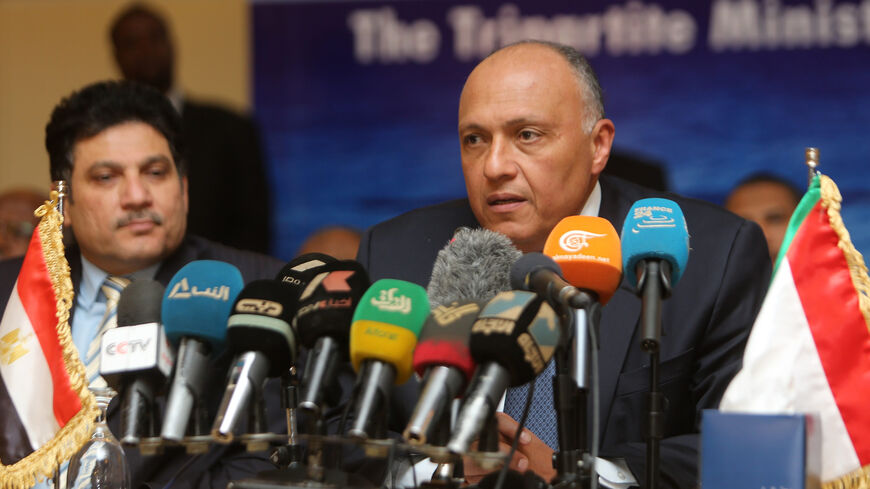CAIRO — In a further sign of growing regional integration, trade exchange between Egypt and the Nile Basin countries rose by 32.6% in 2021, according to the latest data released last month by the Central Agency for Public Mobilization and Statistics (CAPMAS).
The increase represents a strong recovery after the slight drop recorded in 2020 in the wake of the coronavirus pandemic and puts the countries back in their previous gradual upward trajectory.
The growth in trade relations between Egypt and the Nile Basin countries reflects Cairo’s bid to make cooperation with the region one of the main pillars of its foreign policy in recent years, driven by the dispute with Ethiopia over the management of the river’s water but also by security and economic opportunities.
“We have seen a notable effort to expand Egypt’s economic footprint in Africa. Egypt is heavily dependent on the Nile for water, and the government’s focus on boosting trade in the Nile Basin is part of a strategy to establish friendlier relations with upstream states, while it is in the midst of a dispute with Ethiopia over the Grand Ethiopian Renaissance Dam [GERD],” Zaynab Mohamed, a political analyst at Oxford Economics Africa, told Al-Monitor.
The total value of Egypt’s exports to the Nile Basin countries in 2021 amounted to $1.55 billion, an increase of 29.5% over the previous year, CAPMAS data released in November show. Compared to pre-pandemic levels, when the value of its exports to countries in the region stood at $1.22 billion, the rise recorded in 2021 still represents a 27% increase.
The value of Egypt’s exports to the Nile Basin countries barely exceeded $200 million during the first decade of the 2000s, according to a 2020 study on this exchange. In 2009, this soared to around $900 million, and since then it remained largely stable at around $1 billion until last year’s new increase, surpassing the $1.5 billion mark for the first time.
Data from the International Trade Center (ITC) based on United Nations Comtrade statistics show a more moderate increase in trade than that announced by CAPMAS, which does not detail the source of the data in its report. According to Al-Monitor’s own calculations based on ITC’s Trade Map, the value of Egypt’s exports to the Nile Basin countries hit $1.3 billion in 2021, up 15.7% over 2020 and 9.5% over pre-pandemic levels.
According to CAPMAS, slightly over 95% of Egypt’s 2021 exports to the region were concentrated in five countries: Sudan, which alone made up just over 50% of the total; Kenya, with almost 25%; and Ethiopia, Uganda and Tanzania with more modest figures.
The more detailed ITC data, however, show a more nuanced increase in Egypt’s exports to the Nile Basin countries. According to its figures, the main driver of export growth was Sudan, up 50% over 2020, while exports to Kenya actually slipped 3.2% in 2021.
Exports to Ethiopia grew by 14.4% over 2020, but were still 28.1% below pre-pandemic levels. And Tanzania and Uganda, albeit slowly, are showing an upward trend.
The main products exported by Egypt to the region include plastics and derivatives (13.8%), sugars (10.6%), and salt, cement and bricks (5.4%), CAPMAS data showed.
Meanwhile, the value of Egypt’s imports from the Nile Basin countries in 2021 reached $783 million, up 39.4% from the previous year, according to CAPMAS data. Sudan accounted again for nearly half of the total, followed by Kenya (32%) and Congo (14%). Imports from the Nile Basin countries as compiled by ITC instead reach $418 million, although the reason for the difference between the two figures is not immediately clear.
In this case, CAPMAS stated that the main products imported by Egypt included coffee, tea and spices (30%), livestock (27%), and copper and derivatives (14%).
Despite the increase in exports to the Nile Basin countries, in terms of Egypt’s exports to the whole world these still amount to only between 3% and 3.7%, according to Al-Monitor’s calculations based on data collected by ITC.
Sally Mohamed Farid, professor at Cairo University’s Faculty of African Postgraduate Studies, said that to further boost trade, greater efforts should be directed at developing infrastructure in fields such as transportation, energy and communications. She also noted the need for greater coordination and integration of trade regulations and standards.
“There is a gap between the actual trade between Egypt and the Nile Basin countries and the hopes placed on it, and reducing this gap requires more efforts,” she told Al-Monitor.
One of the main reasons for Cairo to seek the cultivation of broader and closer ties with East African countries since 2014 has been the still unresolved dispute around the management of Nile water unleashed with Addis Ababa over the construction of the GERD.
Egypt’s calculations, however, also include the economic opportunities offered by greater regional integration, built among others on its strategic location and the infrastructure and international trade agreements in place. In this context, Mohamed, of Oxford Economics Africa, noted that Egypt has focused its attention on the Common Market for Eastern and Southern Africa, the continent’s largest regional economic organization.
In recent years, Egypt has also concluded several military and intelligence cooperation agreements with countries such as Kenya, Uganda, Burundi and Sudan. And Cairo has made efforts as well to articulate greater cooperation with Nile Basin countries in sectors such as agriculture, health, education and infrastructure.
“Trade supports multilateral ties and eases tensions between regional capitals, and any effort to increase trade should be welcomed and seen as a positive development,” said Mohammed Soliman, manager at McLarty Associates, a strategy advisory firm based in Washington.
“Each of the Nile Basin countries has specific development goals, near-term resource concerns and specialized strengths," he added, arguing that the all benefit from the increase in trade.







